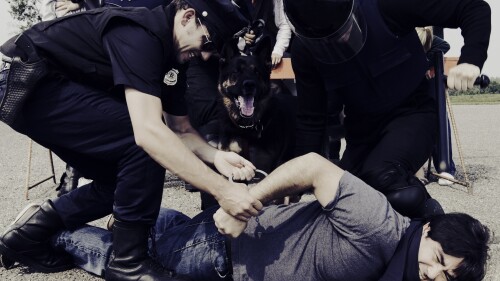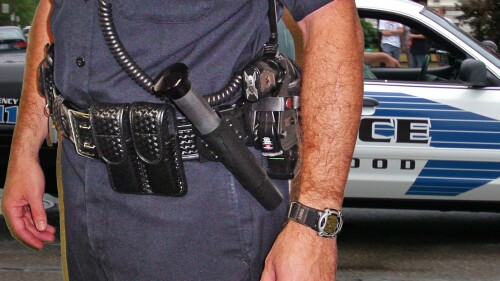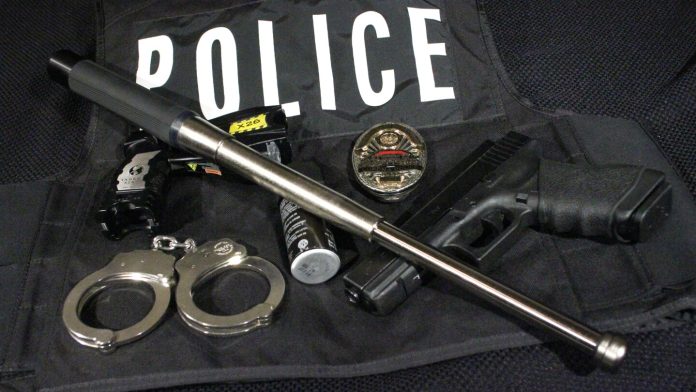The current emphasis on less-lethal options for law enforcement is a commendable trend for police and the public alike.Less-lethal tools can save lives – of officers and suspects both – but only if they work as intended.
Thank you for reading this post, don't forget to follow and signup for notifications!
Any officer may suddenly be drawn into a situation where they need to gain compliance from an uncooperative suspect. To act safely and with the minimum amount of force necessary, most officers carry multiple less-lethal options on their duty belts.
In recent years TASERs have been the less-lethal option of choice for many police departments. However, their actual level of reliability has come under scrutiny as unexpected TASER failures can compel officers to use more-lethal force: namely firearms.
An independent news story prepared by American Public Media (APM), titled “When TASERs Fail”, makes this point clearly. “An APM Reports investigation finds that officers in some big cities rated TASERs as unreliable up to 40 percent of the time, and in three large departments, newer models were less effective than older ones,” the APM story noted. “In 258 cases over three years, a TASER failed to subdue someone who was then shot and killed by police.
“The department with the highest-rated effectiveness – El Paso, Texas – corresponds to the lowest end of Axon’s claims: 80 percent,” noted the APM story (Axon Enterprise manufactures TASERs). “But seven of the 12 departments had effectiveness rates below 70 percent. In Los Angeles (57 percent) and Indianapolis (55 percent), a TASER failed to subdue someone at least four out of every 10 times.
“APM Reports found more than 250 fatal police shootings nationwide between 2015 and 2017 that occurred after a TASER failed to incapacitate a suspect,” the news report added. “In 106 of them, the suspect became more violent after receiving the electrical shock, according to a review of case files and media reports, suggesting the TASER may have made a bad situation worse.”
While tools like TASERs, pepper spray and beanbag rounds all play a role in law enforcement, each has limitations in terms of reliability and effectiveness and presents risks.
According to the New England Journal of Medicine, beanbag rounds have been associated with penetrating and blunt-force trauma injuries. Kinetic impact projectiles like plastic and rubber bullets likewise can cause penetrative injuries, according to BMJ Open, a medical journal. Chemical irritants like tear gas or OC aerosols also have documented severe injury rates, not to mention they can affect anyone in the area of dispersal, including the officers deploying them.
Without viable less-lethal alternatives, a situation that could be defused might escalate to a deadly use of force. So, what is your backup plan if your less-lethal alternative fails or you are at the wrong distance to deploy it safely?
Batons – the original less-lethal weapon – remain one of the most consistent less-lethal options available and offer individualized versus indiscriminate control. But today’s baton is not the truncheon of old. For agencies looking for alternatives they can depend on, expandable batons such as the Peacekeeper Rapid Containment Baton offer officers a proven way to gain control and reduce the risk of escalation.
A reliable, effective less-lethal option
The Peacekeeper Rapid Containment Baton (RCB) is built for quick deployment and control in high-risk encounters. Its balanced steel construction and firearm-style Santoprene rubber grip are designed to give officers leverage and confidence, even in chaotic situations. The baton’s perimeter weighted design places more weight in the distal portion of the baton rather than in the handle. This design emphasizes effectiveness in one to two strikes, helping to end confrontations swiftly and with less physical struggle. Many agencies around the country dub the RCB as “the one-and-done” baton.
The logic behind the Peacekeeper RCB to bring back confidence in the use of a baton and is to convince suspects to comply quickly by providing officers with a reliable, effective and consistent option for enforcing the law. Motivating suspects to comply also reduces their risk of injury or death due to an OIS (officer-involved shooting), making the use of the Peacekeeper RCB a preferable option for all concerned.
“Often effective on the first strike, the baton bridges the gap between less-lethal failures and the use of deadly force,” says Phil Tanzini, owner of Peacekeeper Products International (PPI). “This rapid containment reduces the chance of extensive media exposure since most Peacekeeper baton incidences are over before cameras get rolling. Since ineffective force looks like excessive force, everyone wants a product that is effective and minimizes extensive body cam footage as well.”
It is worth noting that PPI offers extensive training program to ensure officers know how to deploy and use their Peacekeeper RCBs as effectively and safely as possible. “Our goal is to provide a simple yet effective training program that is retainable, even under stress, and to teach officers to achieve compliance with just one to two strikes,” says Tanzini. “At the end of the day, the real goal of the Peacekeeper RCB is to stop the threat as quickly as possible, minimize further escalation and reduce the necessity of using lethal force.”
The right tool for the right moment
Less-lethal options like TASERs, pepper spray, less-lethal ballistics or other chemical or kinetic impact devices have their place. Each can be effective in narrow circumstances, but their limitations are clear. Even when these tools succeed in controlling a subject, they can bring unintended consequences that reduce their overall reliability. For officers, this underscores the importance of carrying less-lethal tools that provide both effective and predictable results.
For their own safety and that of the resistant individual, an officer simply needs more than one less-lethal option on the duty belt before resorting to force. The Peacekeeper RCB offers a level of control and versatility other options often lack. It allows officers to scale their response with precision, using defensive or compliance techniques that minimize the risk of permanent harm while still protecting officer safety.
When other tools may fail, the Peacekeeper RCB is a trusted, immediate option – worthy of its place on every officer’s duty belt.
Read next:





